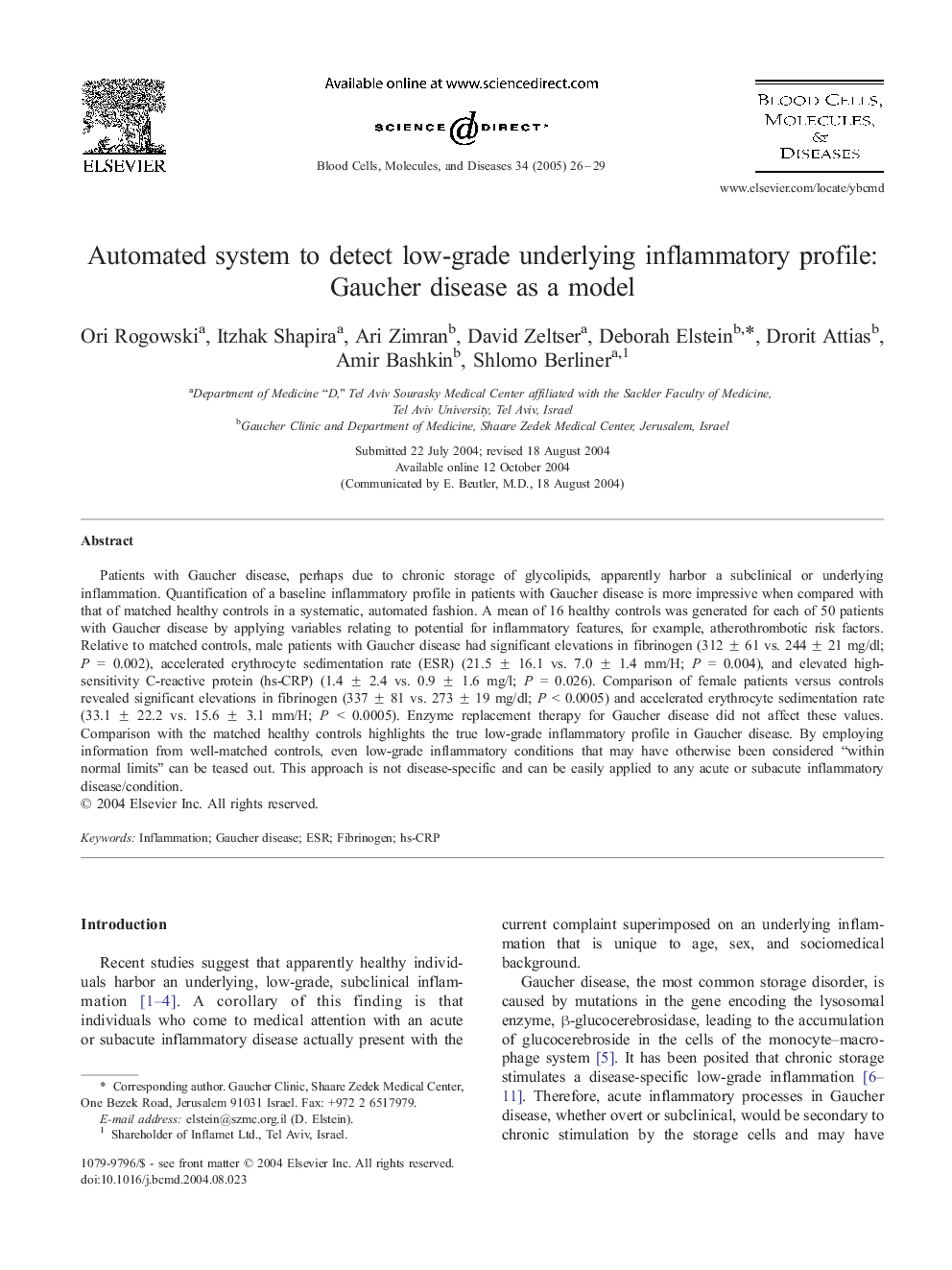| Article ID | Journal | Published Year | Pages | File Type |
|---|---|---|---|---|
| 9137900 | Blood Cells, Molecules, and Diseases | 2005 | 4 Pages |
Abstract
Patients with Gaucher disease, perhaps due to chronic storage of glycolipids, apparently harbor a subclinical or underlying inflammation. Quantification of a baseline inflammatory profile in patients with Gaucher disease is more impressive when compared with that of matched healthy controls in a systematic, automated fashion. A mean of 16 healthy controls was generated for each of 50 patients with Gaucher disease by applying variables relating to potential for inflammatory features, for example, atherothrombotic risk factors. Relative to matched controls, male patients with Gaucher disease had significant elevations in fibrinogen (312 ± 61 vs. 244 ± 21 mg/dl; P = 0.002), accelerated erythrocyte sedimentation rate (ESR) (21.5 ± 16.1 vs. 7.0 ± 1.4 mm/H; P = 0.004), and elevated high-sensitivity C-reactive protein (hs-CRP) (1.4 ± 2.4 vs. 0.9 ± 1.6 mg/l; P = 0.026). Comparison of female patients versus controls revealed significant elevations in fibrinogen (337 ± 81 vs. 273 ± 19 mg/dl; P < 0.0005) and accelerated erythrocyte sedimentation rate (33.1 ± 22.2 vs. 15.6 ± 3.1 mm/H; P < 0.0005). Enzyme replacement therapy for Gaucher disease did not affect these values. Comparison with the matched healthy controls highlights the true low-grade inflammatory profile in Gaucher disease. By employing information from well-matched controls, even low-grade inflammatory conditions that may have otherwise been considered “within normal limits” can be teased out. This approach is not disease-specific and can be easily applied to any acute or subacute inflammatory disease/condition.
Related Topics
Life Sciences
Biochemistry, Genetics and Molecular Biology
Molecular Biology
Authors
Ori Rogowski, Itzhak Shapira, Ari Zimran, David Zeltser, Deborah Elstein, Drorit Attias, Amir Bashkin, Shlomo Berliner,
